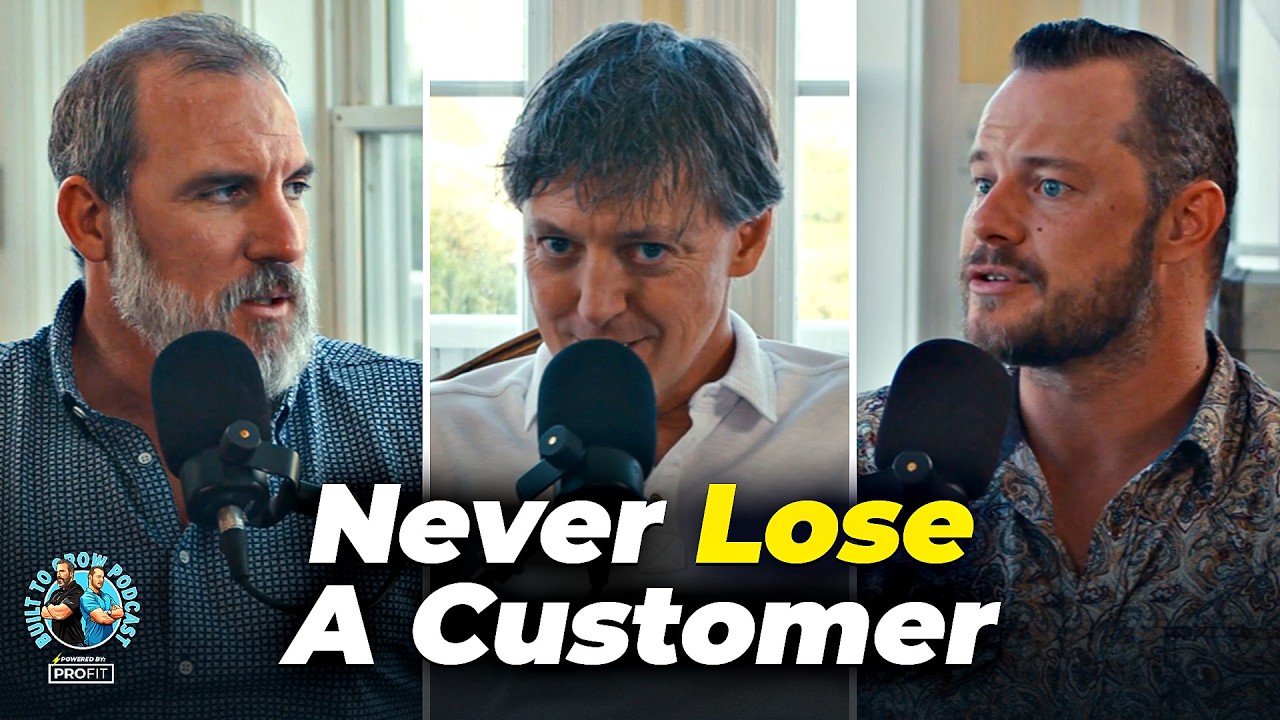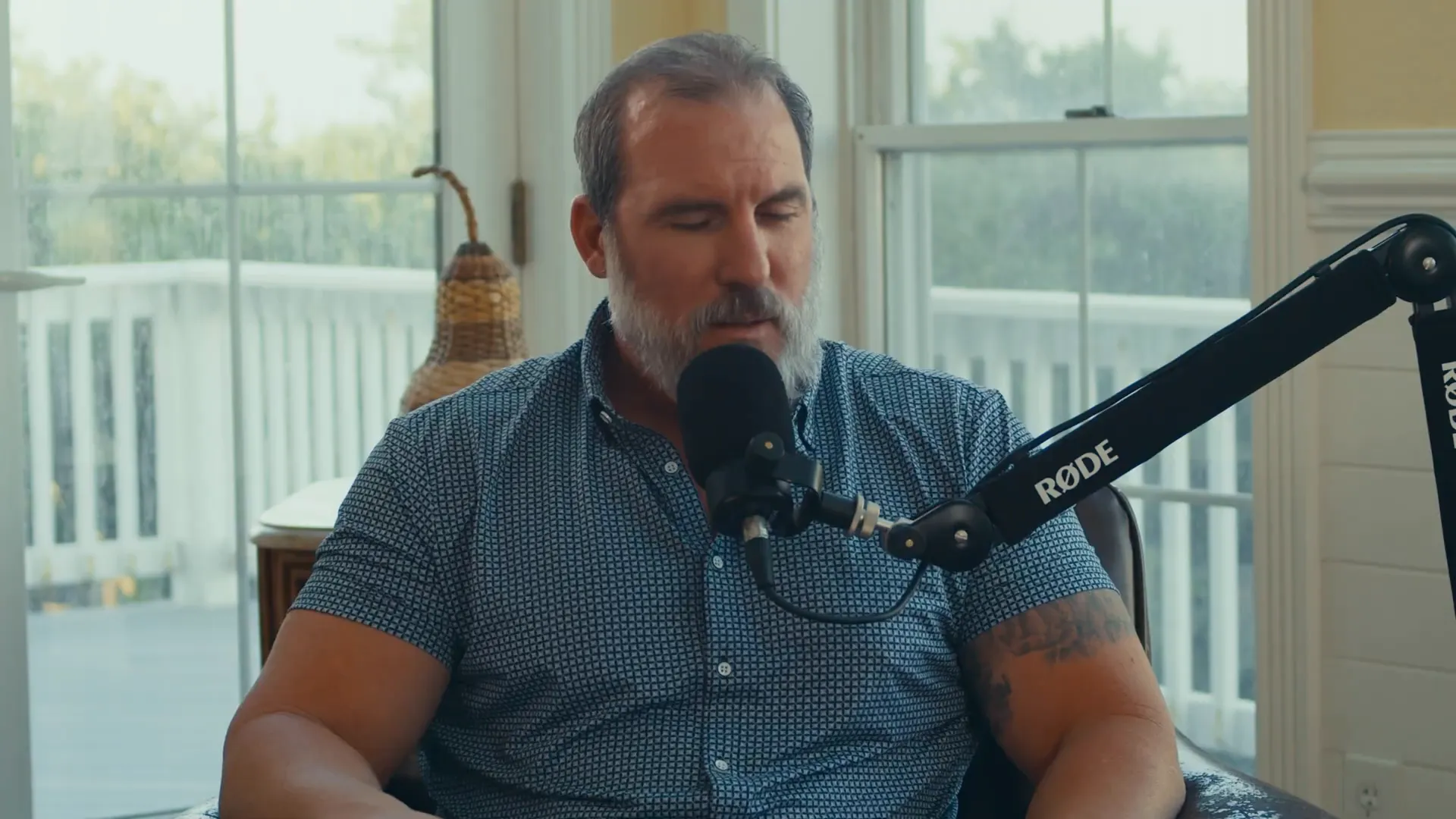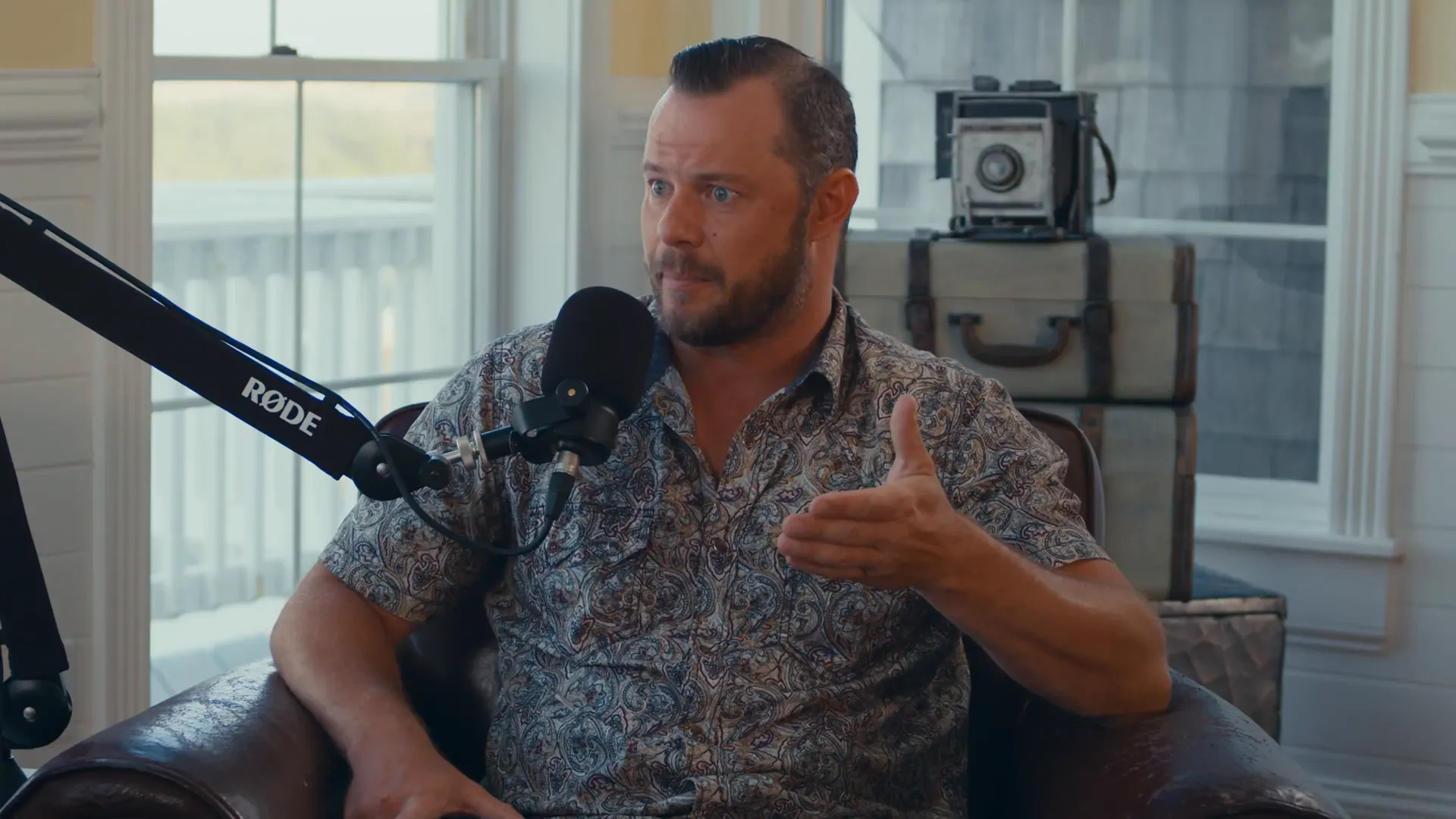
The Most Expensive Mistake Gym Owners Keep Repeating: Transforming Retention in Your Fitness Business

In the competitive world of the fitness business, gym owners often find themselves caught in a relentless cycle of chasing new leads while their existing members quietly slip away. This paradox—where attracting new clients feels like a constant uphill battle despite a steady influx of prospects—highlights a critical issue that many gyms overlook: retention. Understanding and mastering client retention can be the game-changer that transforms your gym from a revolving door into a thriving community of loyal members.
This article dives deep into the insights shared by Joey Coleman, a renowned expert in customer experience and loyalty, and bestselling author of Never Lose a Customer Again. Drawing from his extensive experience working with businesses globally and his keen understanding of the fitness industry’s unique challenges, Joey unpacks why retention is often neglected, the costly mistakes gym owners make, and how a shift in focus towards personalized, meaningful customer experiences can revolutionize your fitness business.
Why Retention Matters More Than You Think in the Fitness Business
At first glance, the fitness business seems straightforward: get people through the door, sell memberships, and deliver workouts. However, Joey points out a fundamental challenge—people don’t naturally want to work out, even though they need it. As he puts it, “We sell a product that people really don’t want. They need it, but they’re not excited to say, ‘Yeah, today I’m going to work out. This is going to be awesome.’”
This inherent resistance to fitness means that motivation fluctuates daily. No matter how great your gym or program is, sometimes your clients just don’t feel like showing up. This makes retention especially tricky but also incredibly important. If you don’t focus on keeping your existing clients engaged and motivated, your business becomes a leaky bucket—you’re constantly pouring in leads while watching valuable members walk out the back door.

Joey highlights a common scenario: gym owners are obsessed with “more leads, more clients, more members.” They believe the solution to growth is simply to bring more people in. But what if the problem isn’t a lack of leads but rather the failure to keep those leads once they become members?
The Cost of Chasing New Leads Over Nurturing Existing Customers
Joey shares a powerful statistic from his research in Never Lose a Customer Again: across all industries globally, the average conversion rate of cold leads is about 20%. In stark contrast, selling to an existing customer has a conversion rate of 60-70%. This means it’s three to four times easier to sell to someone who already knows and trusts you than to constantly hunt for new prospects.
This insight should be a wake-up call for every fitness business owner. Instead of focusing primarily on acquisition, investing in retention and deepening relationships with current clients can yield exponentially better results. It’s not just easier to sell to existing clients; it’s also more cost-effective and sustainable for long-term growth.

Why then, does the fitness industry—and many others—continue to prioritize acquisition over retention? Joey identifies a few key reasons: societal, organizational, and biological factors.
Why Retention Often Takes a Backseat: Societal, Organizational, and Biological Factors
Societal Influence: The Culture of Acquisition
Our society, especially in the United States, is deeply driven by acquisition. Bigger houses, better cars, more TVs—there's a constant cultural push to acquire more. This mindset bleeds into business where the emphasis is on selling more, growing bigger, and capturing new markets.
In the fitness business, this cultural bias manifests as a relentless pursuit of new leads and memberships, often at the expense of nurturing the people already in the gym. The dopamine hit of winning a new client is addictive, while the slower, more nuanced work of retention doesn’t provide the same immediate gratification.
Organizational Structures That Favor Sales Over Service
Joey points out a fascinating organizational reality: about 70% of executives come from sales and marketing backgrounds. This means leadership conversations often revolve around acquisition and growth strategies. Meanwhile, customer service departments typically report to marketing heads, creating a structural bias that favors getting new customers over keeping existing ones.
This setup means that budgets, incentives, and attention skew heavily toward front-end activities. Retention efforts are often underfunded, undervalued, and overlooked despite their critical importance.

Biological Tendencies: The Chase Versus the Catch
Human biology also plays a role. We’re naturally wired to enjoy the thrill of the chase more than the satisfaction of the catch. This applies in marketing and sales, where the excitement of acquiring new clients often outshines the quieter, ongoing work of keeping them happy and engaged.
Joey draws an analogy to relationships: the initial excitement of dating versus the ongoing commitment of marriage. Just as successful marriages require continuous effort, so do customer relationships. “I try to approach each month as if it’s the first month of my marriage,” Joey explains, emphasizing the importance of continually deepening connections.
Common Retention Pitfalls in the Fitness Business
Understanding why retention is often neglected is the first step. Next, it’s critical to identify the pitfalls that cause gyms to lose customers despite their best intentions.
The Disconnect Between Sales and Delivery
One of the most damaging mistakes Joey has seen is the handoff problem. After a successful sales conversation, new members are often handed off to trainers or staff who were not involved in the initial relationship-building. This disconnect leads to broken trust when the delivery doesn’t match the promise.
Imagine being “taken on all the dates” by a salesperson who knows your hopes and fears, only to be handed off to someone else who doesn’t understand your story or expectations. This gap often results in disappointment and early cancellations.
Joey stresses that while salespeople shouldn’t necessarily be the ones delivering workouts, there must be clear communication and knowledge transfer between sales and service teams. Everyone must be aligned to create a remarkable, consistent customer experience.

Overpromising and Under-delivering
In the fitness business, it’s tempting to use “whiz bang marketing hooks” promising dramatic results—like losing 40 pounds in a week. When those promises aren’t met, clients feel misled.
Joey humorously notes, “Chop off your leg, maybe,” in response to unrealistic weight-loss claims. The reality is that when expectations set by marketing don’t align with actual delivery, trust erodes quickly, leading to cancellations.
The Revolving Door of New Leads Without Real Growth
Joey and the hosts of the Built to Grow podcast share experiences where gyms accumulate hundreds of leads and paid trials but fail to convert them into lasting revenue increases. Without retention, the gym becomes a revolving door—new clients come in, but many leave within months.
This cycle is expensive and unsustainable. Marketing budgets balloon, but revenue plateaus. The key is shifting focus from just filling the funnel to nurturing those already inside.
Retention Isn’t About T-Shirts and Parties: Meaningful Engagement is Key
Many gyms try to boost retention with client appreciation events, holiday parties, and branded giveaways. While these can be fun, Joey warns they often miss the mark because they aren’t truly personalized or aligned with what clients care about.
For example, handing out unisex t-shirts that don’t fit well or resonate with members is unlikely to build loyalty. Similarly, holiday parties can become routine and lose their “epic” appeal over time.
Joey shares his own experience of hosting lavish holiday parties with open bars, raffles, and entertainment, only to see cancellation requests flood in right after the events. This was a turning point that challenged his belief in community events as a retention strategy.
He explains the law of diminishing returns: what’s exciting and novel at first becomes expected and ordinary if repeated without innovation. This underscores the need for ongoing creativity and genuine personalization.
Why Personalization Trumps Generic Gestures
The best retention strategies come from truly listening to clients and showing them you understand their goals and lives. Joey offers a compelling example: if a client mentions a big trip to the Outer Banks and a desire to look good in a bathing suit, instead of giving a generic gym t-shirt, give them a meaningful gift related to that trip—a picture frame with “Outer Banks” on it, a gift certificate to a local restaurant, or something that connects to their personal story.
Such thoughtful gestures create a story and emotional connection far more powerful than mass-produced swag. When others see these personalized touches in clients’ homes, it becomes a conversation starter and a testament to your care and attention.
How to Build a Retention Strategy That Works
Listen, Remember, and Prove You Care
Retention starts with listening. When clients talk about their goals, challenges, or life events, take note and find ways to follow up in meaningful ways. This could be a quick check-in, a tailored workout plan adjustment, or a small gift that shows you were paying attention.
Joey emphasizes that it’s not about doing one big thing but continually showing up in ways that matter to your clients. This builds trust and deepens loyalty.
Align Your Team to Deliver Consistent Experiences
Ensure that your sales, marketing, and delivery teams communicate effectively. Align messaging so that what’s promised during sales is delivered consistently by trainers and staff. This alignment preserves trust from day one and reduces early cancellations.
Understand That Customer Goals Evolve
People’s fitness goals change over time. Instead of getting frustrated when a client’s priorities shift, lean into curiosity. Ask, “What’s your next goal?” and adapt your programs accordingly. This demonstrates empathy and flexibility, key traits that keep clients engaged.
Invest in Retention as a Priority, Not an Afterthought
Joey points out a striking disparity: most gym owners can tell you exactly how much they plan to spend on marketing but have no clear number for retention investments. Making retention a key performance indicator (KPI) and budgeting accordingly can transform your fitness business.
When you reinvest a portion of your marketing budget into retention, you maintain or reduce costs while increasing lifetime customer value. This shift from acquisition-centric spending to balanced investment is critical for sustainable growth.

Overcoming Resistance to Prioritizing Retention
Despite the clear benefits, many fitness business leaders resist focusing inward on retention. Joey identifies several reasons for this resistance:
- Societal pressures that glorify growth and acquisition.
- Organizational incentives that reward sales performance over customer experience.
- Biological tendencies to prefer the excitement of new relationships over maintaining existing ones.
Breaking through these barriers requires a mindset shift at the leadership level and a cultural change within the organization.
Rethinking Incentives and KPIs
Traditional organizational structures reward sales teams with commissions but rarely incentivize renewals or retention. Similarly, Net Promoter Score (NPS) surveys, once a gold standard, have become less reliable as customers “game” the system to avoid follow-up calls.
Joey encourages gym owners to embrace customer calls—even complaints—as opportunities to fix issues and strengthen relationships. The real risk is when customers silently ghost, cancel credit cards, or stop showing up without communication.
Embracing the Unscalable for Maximum Impact
Personalized experiences that create lasting loyalty are often unscalable. This can feel daunting to gym owners managing hundreds of clients. However, Joey argues that these unscalable efforts pay for themselves through higher retention, referrals, and customer lifetime value.
Following the example of Jesse Cole and the Savannah Bananas, who focus on doing remarkable things for individuals rather than generic mass marketing, gym owners can create memorable experiences that resonate deeply.
Practical Retention Ideas for Your Fitness Business
To wrap up, here are some actionable ideas inspired by Joey’s insights to help gym owners improve retention:
- Personalized Gifts: Create meaningful gifts tied to your clients’ goals or life events instead of generic swag.
- Regular Check-ins: Schedule proactive communications to revisit and adjust goals.
- Align Sales and Service Teams: Hold regular meetings to ensure consistent messaging and shared client knowledge.
- Celebrate Milestones: Recognize progress in ways meaningful to the client, not just standard achievements.
- Customer Appreciation Events: Make these unique, social, and focused on client interests rather than routine parties.
- Collect and Act on Feedback: Encourage honest feedback and demonstrate improvements based on what you hear.
Conclusion: Shift Your Focus, Transform Your Fitness Business
The most expensive mistake gym owners keep repeating is neglecting retention in favor of chasing new leads. While acquisition is important, it’s retention that drives sustainable growth, profitability, and a thriving fitness community.
By understanding the societal, organizational, and biological reasons behind this common oversight, gym owners can consciously shift their focus. Investing in personalized, meaningful customer experiences, aligning teams, and adapting to evolving client goals will build trust and loyalty that lasts.
Remember, retention isn’t about flashy giveaways or routine parties. It’s about listening, remembering, and proving to your clients that they matter long after the sale. When you do this well, referrals increase, revenue stabilizes, and your fitness business grows organically.
As Joey Coleman says, “If you just kept the damn members in your gym, you wouldn’t have to chase down so many dang leads.” It’s time to stop chasing and start cultivating.

Ready to make retention your secret weapon? Start today by listening more closely to your members and creating experiences that show you truly care. Your fitness business will thank you.


